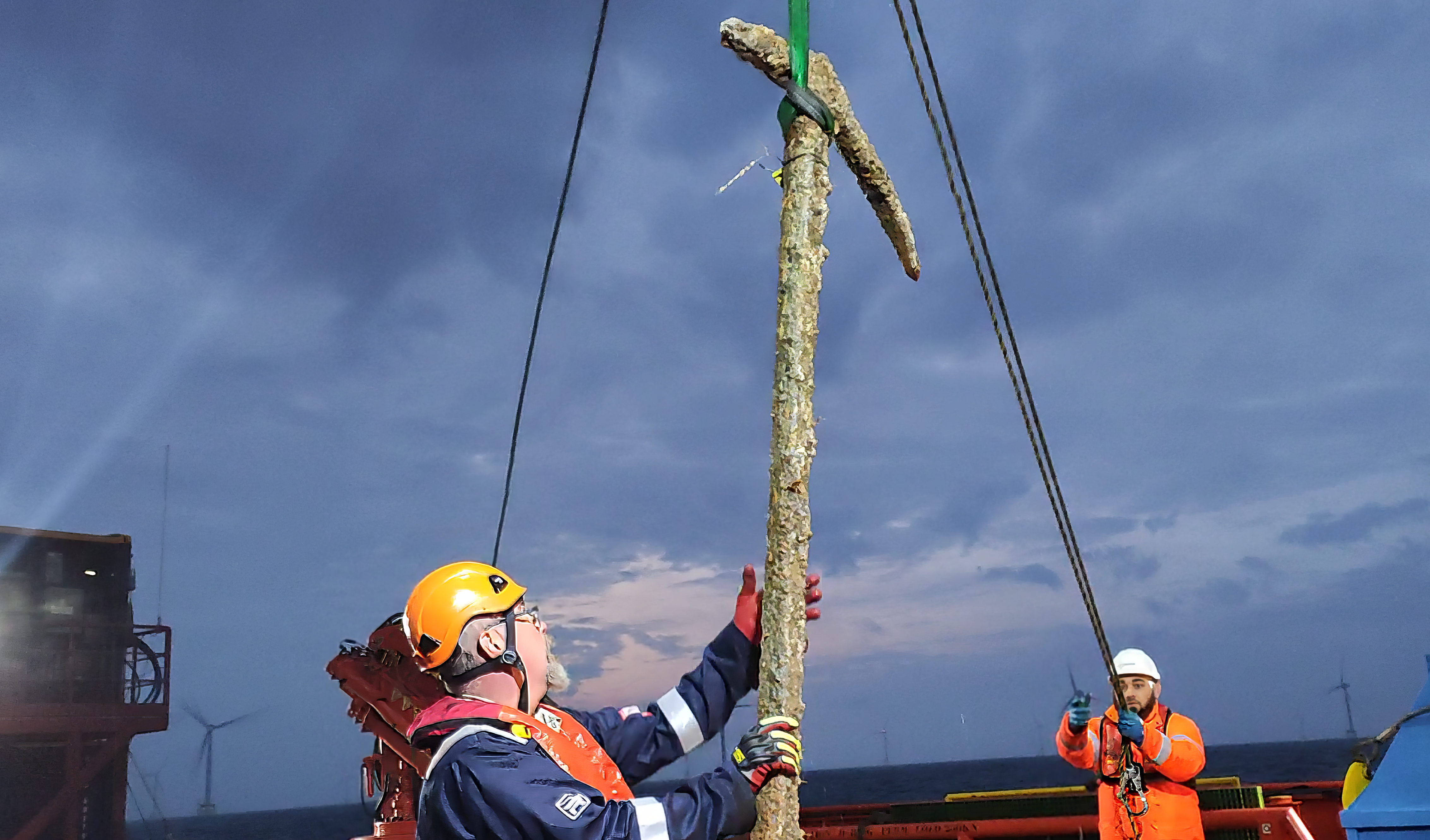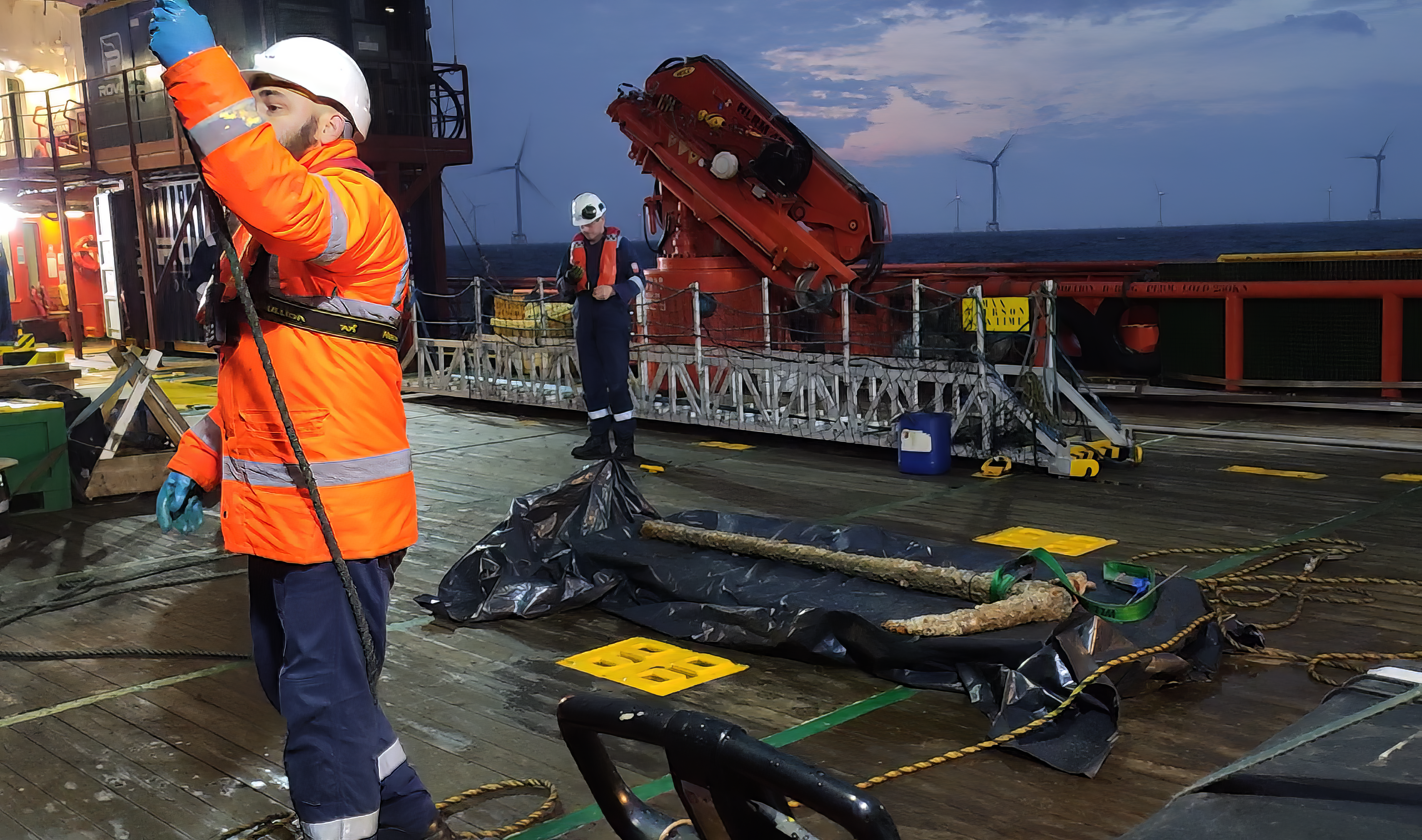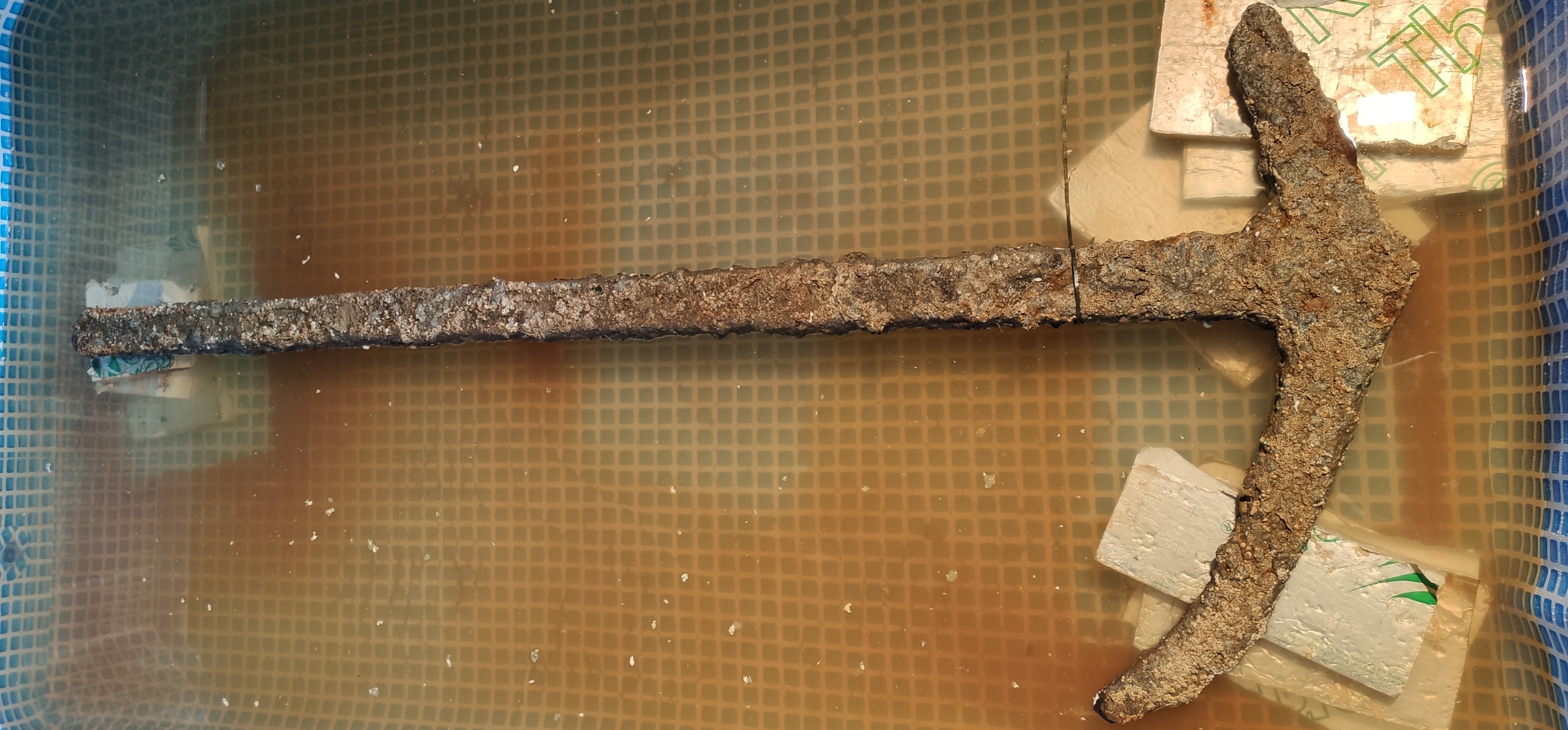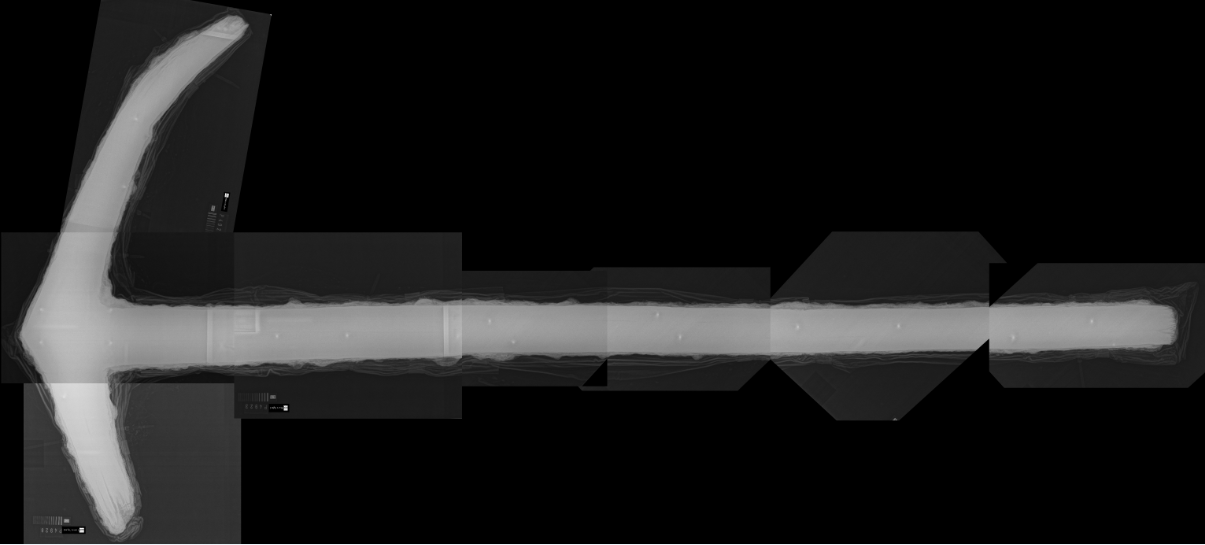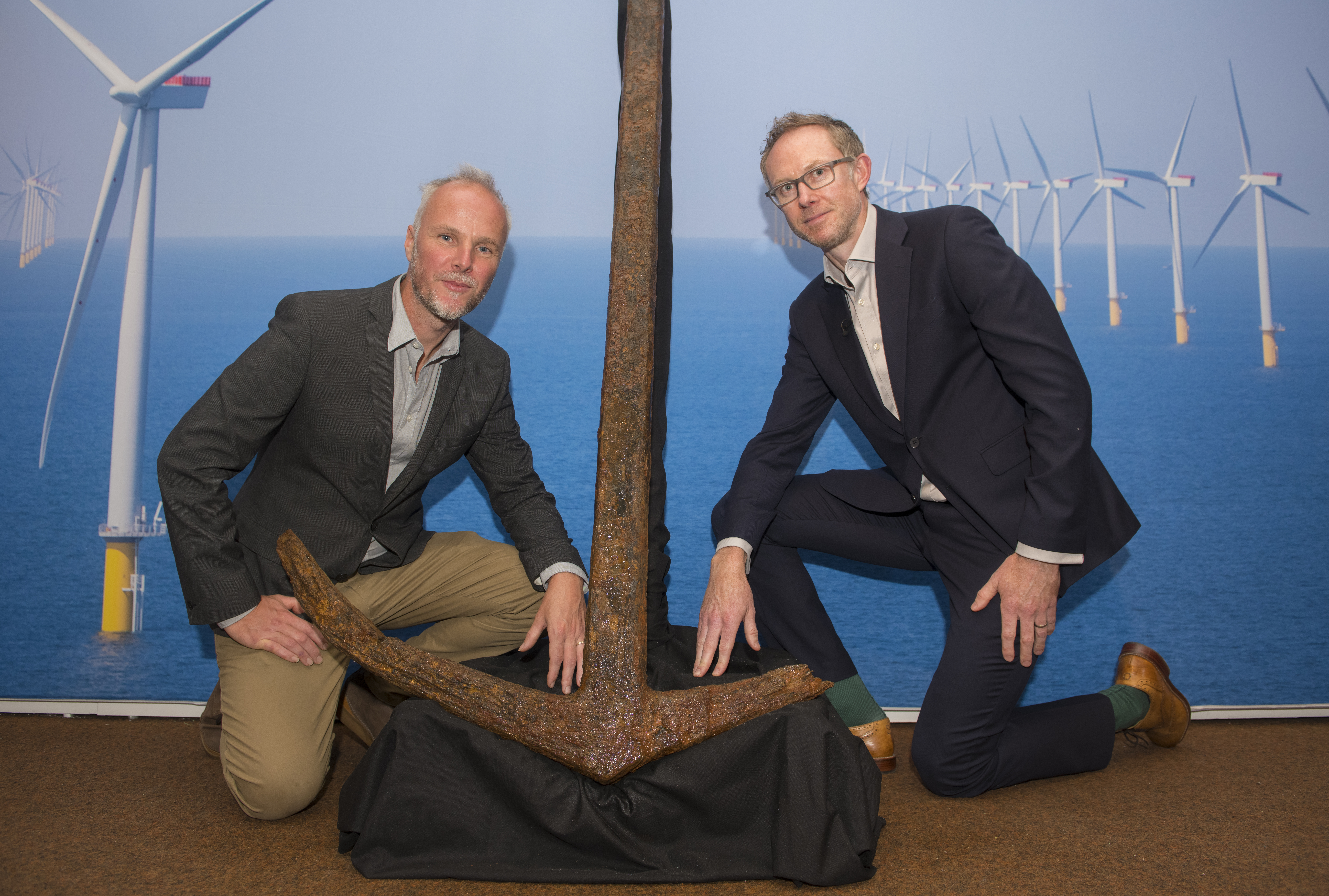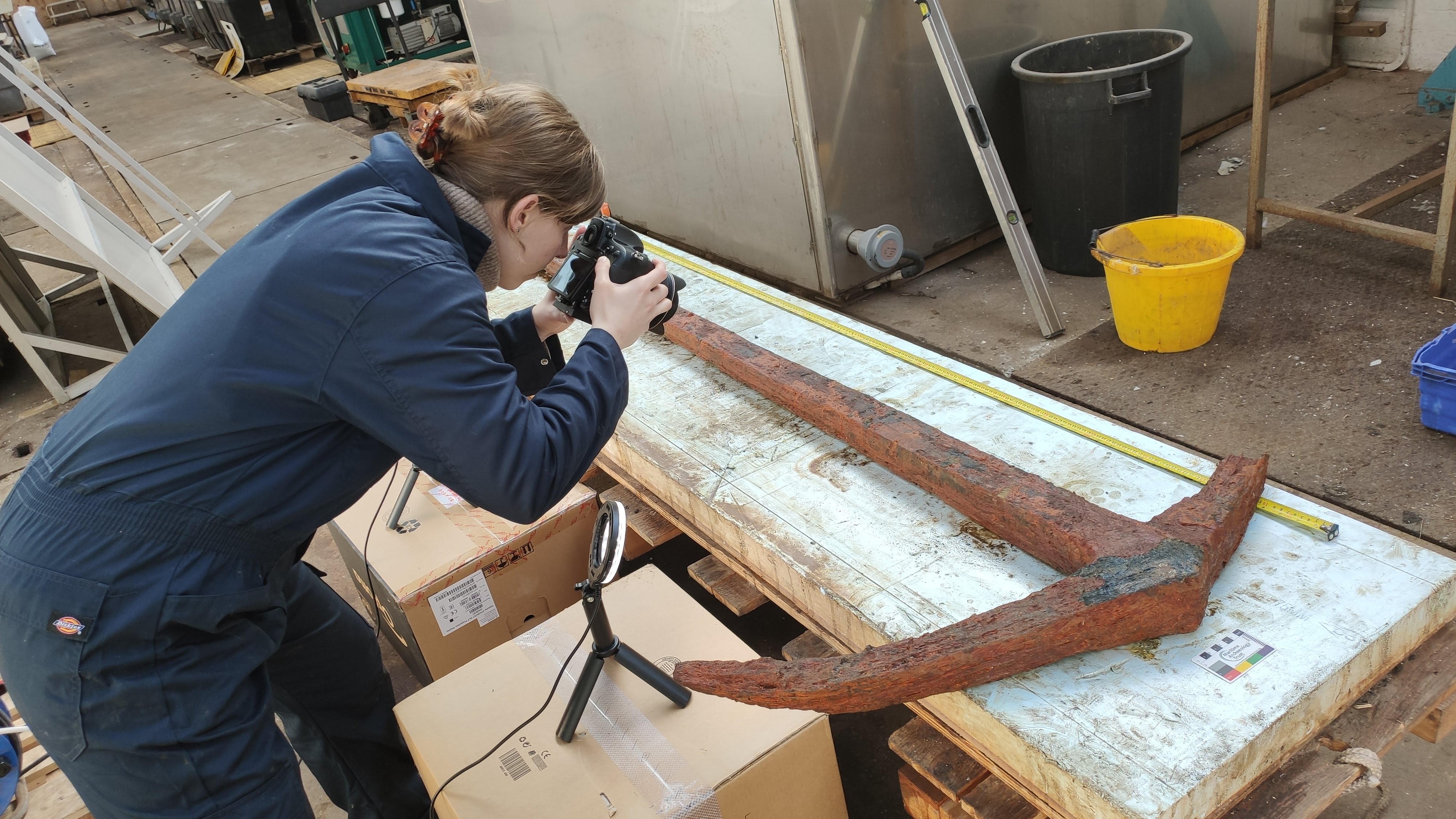Maritime Archaeology Ltd were commissioned to work on the development of the East Anglia ONE offshore wind farm in 2018. We have supported them through their development process and worked closely with them through to their post-construction monitoring which included the recovery and conservation of a historic anchor.
It is rare that archaeological objects are recovered during offshore projects, as avoidance and preservation in situ is industry best practice. However, some archaeological discoveries have a unique potential to further knowledge – this seemed to be the case for this historic anchor when it was discovered following magnetometer surveys conducted as part of the pre-construction surveys.
The anchor was first identified in 2018 during unexploded ordnance (UXO) surveys carried out in the intended development area. In 2019, a watching brief was conducted at East Anglia ONE’s offshore development site to investigate the points of interest that were identified during the wind farm’s UXO analysis. With the help of ROVs we located and discovered the magnetic anomaly was an anchor, which had been well preserved beneath a layer of compacted sediment on the seafloor. The anchor was then recovered to the vessel to be recorded and photographed so that a 3D model could be made, and further analysis could be carried once the anchor had been returned to the seafloor.
Over the course of the watching brief a total of 15 anchors were brought to deck for recording. Most were identified as 18-19th century British Admiralty-pattern anchors, but there was something about this anchor that seemed a little different and warranted further investigation.
Following extensive collaboration between Scottish Power Renewables, Historic England and ourselves it was agreed that this anchor had potential to be a significant discovery and a plan was put in place for everything from recovery to, conservation, to display.
In 2021 the anchor was recovered and returned with us to undergo conservation and a series of non-invasive assessments which will help us narrow down the context of its origin – we currently believe it dates from around 40 AD to the 16th century based on the design of the crown and arms and the robust wrought iron composition.
In 2022 we took the anchor up to Suffolk for a brief display in the Ipswich Museum, where it will return to be displayed following the completion of its conservation and analysis.
You can view some media stories about the anchor and its potential here:
We will be sharing our updates as analysis continues – keep an eye out here and on our social media (links to these can be found below in the footer).

